Climbing plants in the room are a good way to admire fresh green even in unusual places in the apartment.
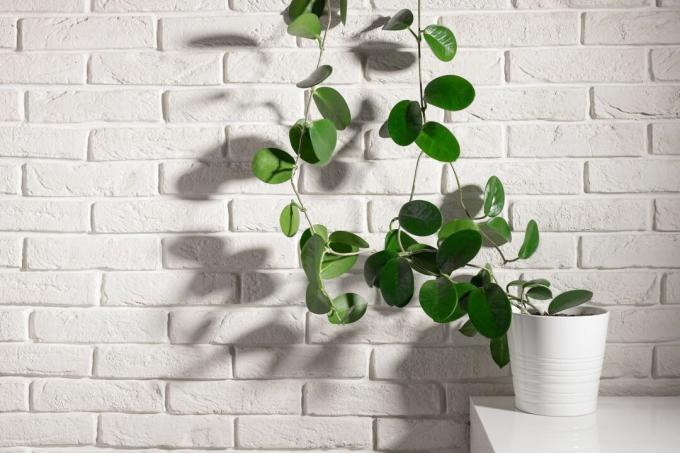
Not every plant with long shoots is automatically a climbing plant. Here we present the most beautiful supposed climbing plants for the room and explain the differences in the way they grow.
Expert tip: From a botanical point of view, "real" climbing plants are only those that develop special climbing organs with the help of which they can hold on to climbing aids. Leaves or side shoots can be transformed into these tendrils. The shoot axis remains straight.
Climbing plants, on the other hand, wrap the entire shoot axis around their climbing aid.
The spread climbers and self-climbers also go up, but differently. Spread climbers need a stable aid to climb: They have very stiff shoots and find support by bracing them against their climbing aid. Self-climbers do not necessarily need a climbing aid, but can simply grow up the walls of houses by developing roots that have been transformed into adhesive organs.
contents
- Blue passion flower (Passiflora caerulea)
- Russian wine (Cissus alata)
- Ivy (Epipremnum)
- Climbing Philodendron (Philodendron scandens)
- Porcelain Flower (Hoya carnosa)
- Climbing Candlestick (Ceropegia sandersonii)
- Common ivy (Hedera helix)
Blue passion flower (Passiflora caerulea)
One of the few indoor plants that actually climbs is the blue one passion flower (Passiflora caerulea). It forms tendrils in the leaf axils, with which it can use climbing aids to grow up. If you take good care of the passion flower, you will be rewarded with beautiful flowers. To do this, it needs a bright location, high humidity and regular water and nutrient additions during the growing season. Other passion flowers that are suitable as climbing house plants are the golden passion flower (Passiflora aurantia), the vine-leaved passion flower (Passiflora vitifolia) and the lemon passion flower (Passiflora citrina).

Russian wine (Cissus alata)
Also one of the climbing plants for the room is the Russian wine (Cissus alata), also called Königskmme, Rautenblättrige Klimme or Königswein. The plant forms forked tendrils, which it uses to hold on to scaffolding or lattices. The leaflets of the three-part leaves are diamond-shaped and serrated on the edge. The location should not be too bright, semi-shade is best. The plant, which originates from the tropics and subtropics, also likes high humidity.
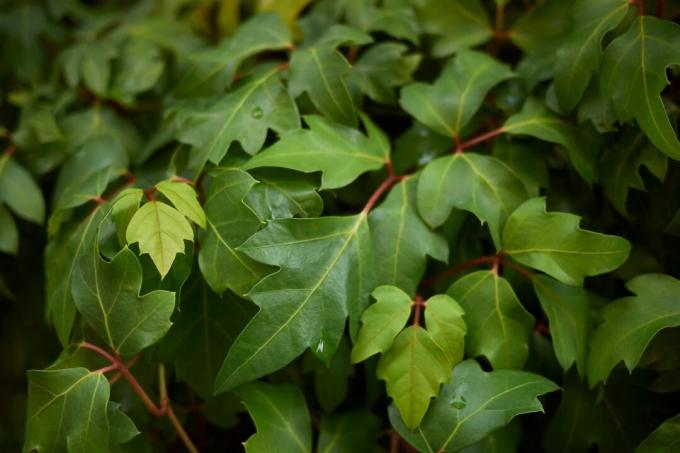
Ivy (Epipremnum)
An extremely popular houseplant with long shoots is the ivy (Epipremnum). However, this is not a climbing plant in the botanical sense, because the ivy does not form any tendrils. If you didn't wrap it around a climbing aid, it would just hang down because it doesn't wrap itself. However, its long, leafy shoots can be draped around shelves, railings or other climbing aids so that the ivy looks like a climbing houseplant. The ivy is fairly easy to care for and can also be kept in rooms with less light. Since the plant is poisonous, however, a suitable place should be chosen in households with children and pets. The ivy is a fast-growing plant and can develop shoots up to 10 m long. It requires high humidity and temperatures above 16 °C all year round. Occasional watering and fertilizing are the main requirements of the easy-care ivy.
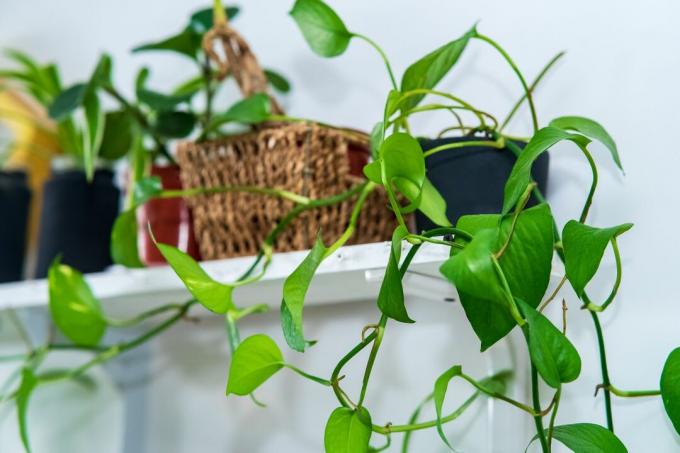
Tip: the Spotted ivy (Scindapsus pictus) has a white pattern on its green leaves, making it particularly decorative.
Climbing Philodendron (Philodendron scandens)
Like the ivy counts too Climbing philodendron (Philodendron scandens) not to the actual climbing plants. However, the plant, also known as a tree friend, develops long shoots with heart-shaped leaves that climb up and entwine on trellises. There are different varieties, for example with light variegated leaves. As a robust plant, the climbingPhildodendron also one or the other care error. It is therefore also ideal as a climbing houseplant for people without a green thumb or with little planting experience.
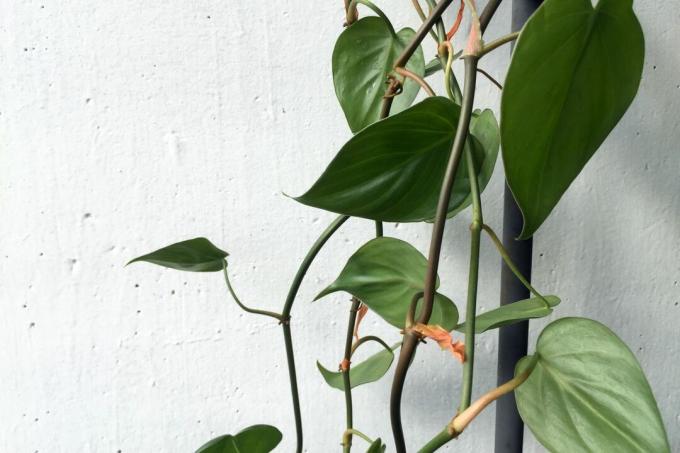
Tip: In order for the climbing plants to develop long and healthy shoots, they need nutrients during the growing season. For ornamental foliage plants such as the climbing philodendron or the ivy, for example, ours Plantura organic indoor and green plant fertilizer best for. It can be used for the majority of houseplants and does not only care for the above-ground parts of the plant. Because it also strengthens the roots with the help of a native soil bacterium, which improves nutrient absorption and thus ensures all-round healthy plants.
Porcelain Flower (Hoya carnosa)
Not only the fleshy, succulent leaves are at the porcelain flower (Hoya carnosa) an eye-catcher. The white flowers have a waxy shine and attract everyone's attention between spring and autumn, which is why the plant is also called wax flower. Porcelain flowers also do not develop tendrils. However, its long, fast-growing shoots can easily be placed around various objects to give the impression of a climbing houseplant. There are other types and varieties of porcelain flowers that are suitable for keeping in the room.
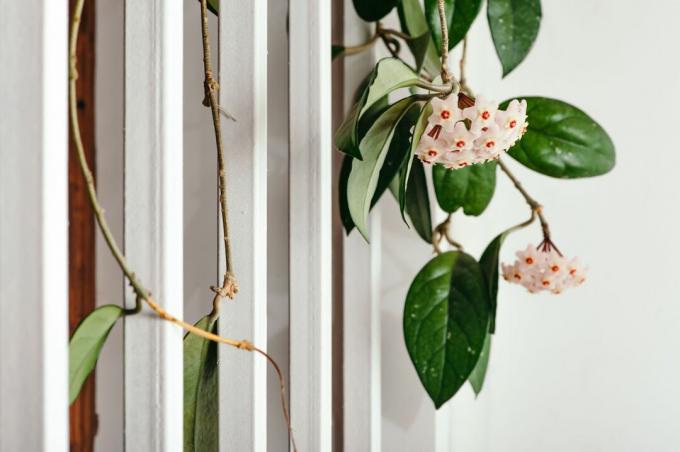
Climbing Candlestick (Ceropegia sandersonii)
The climbing candlestick is not a climbing houseplant in the botanical sense, but rather a creeping plant. Such plants entwine climbing aids with their entire main shoot. The Climbing Candlestick (Ceropegia sandersonii) forms extravagant flowers that look like parachutes. It is therefore also called parachute flower or parachute chandelier flower. the string of hearts is also one of them candlestick flowers and develops long shoots that look wonderful in a traffic light pot.
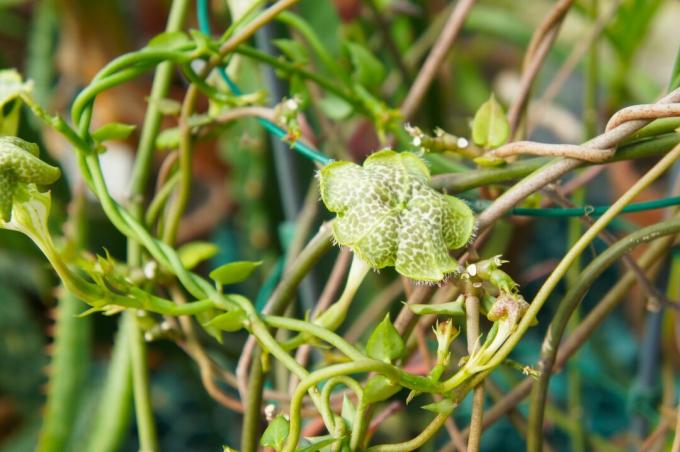
Common ivy (Hedera helix)
The common ivy (Hedera helix) cannot only be planted in the garden: it can also be kept indoors. Ivy is also not a climbing houseplant in the botanical sense. The plant forms so-called adhesive roots, with which it can even climb up walls. In order to avoid residues on the wall in the room, it is advisable to use a climbing aid for the Ivy as a houseplant to set up. The ivy can also cope without much light and likes high humidity. As far as care is concerned, he is quite undemanding. Regular watering and occasional fertilizers are still essential.
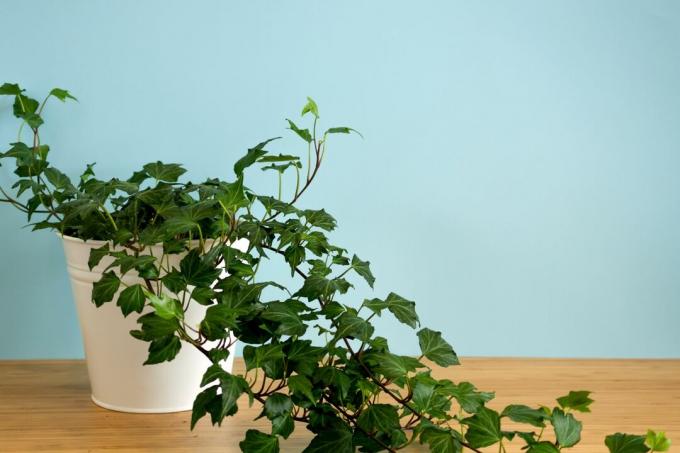
As mentioned above, regular feeding is essential for healthy and vigorous plants. We'll show you what to look out for in particular Fertilizing houseplants should consider.



